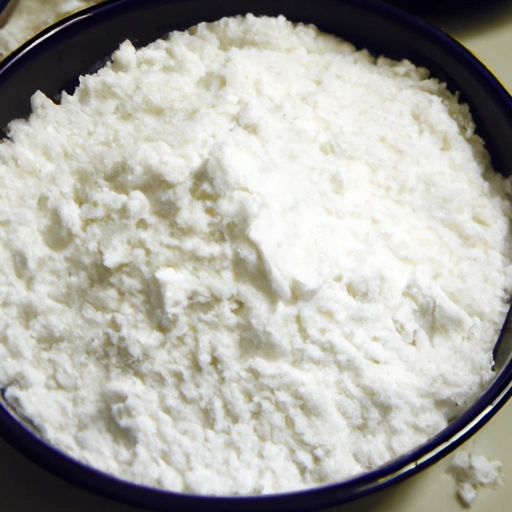Rice Flour
Description

Rice flour is a fine flour made from ground rice. It's a staple in many Asian, American, and European recipes and is valued for its versatility and gluten-free properties. This ingredient comes in various types, including white rice flour, brown rice flour, and sweet or glutinous rice flour, each with unique qualities suitable for different dishes. Rice flour is commonly measured in cups (US), grams (Europe), or ounces (US/UK), adjusting for the recipe's requirements.
Common uses
Rice flour is widely used as a thickening agent in sauces, gravies, and soups. It's also a primary ingredient in noodles, desserts, and pastries, especially in gluten-free baking. Moreover, rice flour serves as a coating for fried foods, offering a light, crispy texture.
Nutritional value
Calories
Rice flour is relatively high in calories, providing energy for daily activities. One cup of white rice flour (158g) contains about 578 calories.
Protein
It contains a moderate amount of protein, with one cup offering approximately 9.4 grams.
Fat
Rice flour is low in fat, with one cup containing about 1.2 grams.
Carbohydrates
Rich in carbohydrates, one cup of rice flour provides around 127 grams, which is a significant portion of the daily recommended intake.
Vitamins
While not a significant source of vitamins, rice flour does contain some B vitamins, depending on the type of rice used to make it.
Minerals
It also provides essential minerals such as iron and potassium, with iron content about 1.2 mg per cup.
Health benefits
Rice flour can be beneficial for those following a gluten-free diet or with celiac disease. Being easily digestible, it's also a good option for people with digestive issues. Additionally, brown rice flour contains more fiber than white rice flour, aiding in digestion and providing a feeling of fullness.
Potential risks
Despite its benefits, rice flour is a refined carbohydrate that can spike blood sugar levels, potentially affecting individuals with diabetes. It's also less nutritious than whole grain flours, and overconsumption may lead to weight gain.
Common recipes
Rice flour is used in a myriad of recipes, from gluten-free bread and cake to noodles and dumplings. It's also a key ingredient in many Asian sweets such as Japanese mochi, Filipino bibingka, and Indian appam.
Cooking methods
It can be used for baking, steaming, frying, and as a thickener for sauces and soups. Its fine texture makes it an excellent flour for creating smooth and fine-textured dishes.
Pairing with other ingredients
Rice flour pairs well with dairy products in baked goods, and with meats and vegetables in savory dishes. It also works nicely with fruit-based desserts and sweet sauces.
Summary
Rice flour is a versatile, gluten-free ingredient suitable for a wide range of culinary applications. It's a valuable addition to any kitchen, offering nutritional benefits and a variety of uses in cooking and baking. From thickening sauces to creating delicate gluten-free pastries, rice flour is an essential pantry staple with a rich historical background and global significance.